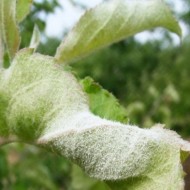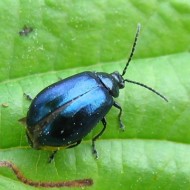We grow various varieties of actinidia argut in the country: tips for beginners
Content
Characteristics of actinidia argut
The culture is a ligneous vine, intended for gardens. In the wild, it is found in Indochina, Japan, Sakhalin and the Kuriles. Having taken root, it grows abundantly, wrapping around any supports or obstacles. Owners often use it to decorate gazebos and arches, as well as a hedge.

General description of the culture
The stem of the plant is curly, light brown, stiff. It grows in length up to 20-30 m with a thickness of 2-3 cm. For support, strong supports like trellises are erected on the site. Vines are capable of stretching 7 m.
Leaves bloom in early spring. They are elongated in the manner of an ellipse, 10 cm long, the apex is in the form of a pointed tip, along the edges there are small denticles. At first, they turn green, but by the time of flowering they brighten, merging with white inflorescences. By autumn they turn yellow, acquiring a crimson hue. Fall by mid-October.
The vine has been growing for 80–90 years. The first harvest brings in 3-5 years after planting.
Flowering, pollination and fruiting
With the onset of flowering, the culture is fragrant with a pleasant sweet aroma. Inflorescences of white or light green color grow up to 2 cm in diameter. The pollen is black.
Being a dioecious culture, actinidia argut needs male and female bushes. They are distinguished by spring: in the female inflorescence, a stamen and a pistil are formed, in the male - only a stamen. One male bush is enough to fertilize 5 female ones.
Productivity and use of fruits
By the fall, fruits ripen, outwardly similar to gooseberries or miniature kiwi. The color is green with brown spots. There are hybrids with raspberry fruits. Round or oval shape (depending on the variety). The weight of the fruits is 5 g. Their taste is sour-sweet, they smell nice. In terms of vitamin C content, they surpass kiwi and even lemon.
Under favorable conditions, the yield is up to 20 berries per bush. The fruits hang on the branches for a long time, do not fall off. The harvested crop can be eaten fresh. The fruits are also dried, put on compotes, used to make jam and preserves.
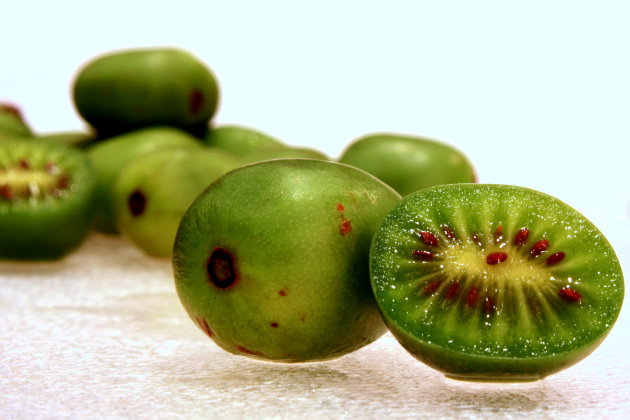
Video "Actinidia arguta and kolomikta"
This video provides a detailed description of two different species of actinidia.
Popular varieties in horticulture
Today, there are several dozen hybrids that can withstand domestic winters. Here are the descriptions of some of them.
Pineapple
One of the most popular varieties. The fruits ripen by October, taking an oval shape. The taste is traditional.Named for its peculiar aroma, similar to the smell of pineapple. The peel is thin, edible. They can withstand even severe frosts, do not require excessive care. The variety needs periodic sanitary pruning and watering in the summer heat.
Balsamic
It ripens in the second half of September. The geometry of the fruit resembles a parallelepiped with a rounded top. The average weight of fruits is 5–6 g. The smell is slightly tart, similar to coniferous. The pulp is tender, the rind is smooth, greenish.
Weiki
Grown by German breeders, it is in demand as a pollinator for other varieties. Fruits are tasty, round or oval, medium size. A bountiful harvest is given by female individuals of the culture. The color of the berries is green, with a bright red and brown tint from the sunny side. The variety can withstand cold temperatures down to -30 ° C.
Viti Kiwi
Self-fertile hybrid, used in summer cottages and for industrial purposes. Does not need pollinators, brings abundant harvests. Fruits of the correct oval geometry, green. The peel is thin, the contents are juicy.
A feature of Viti Kiwi fruits is the frequent absence of seeds in the pulp, which affects the taste.
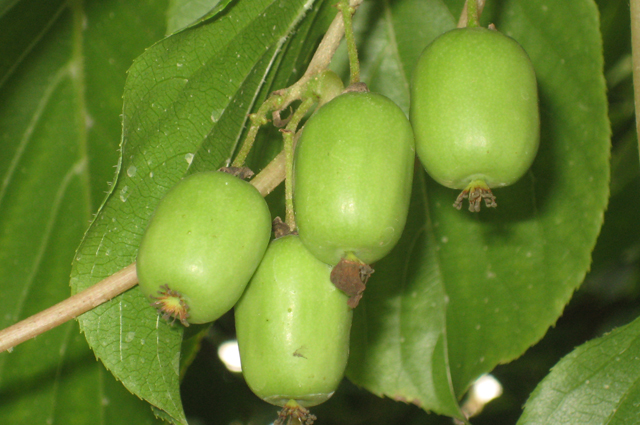
Jumbo
Bred in Italy. Fruits grow up to 6 cm, turning green or yellow. Begins to bear fruit 3-4 years after planting. Stable collection begins at 5-7 years. You can collect Jumbo at the end of September. The fruits are massive, weighing up to 30 g. Less aromatic than other varieties, but much sweeter. Stored for a long time without losing freshness. The bushes grow up to 8 m, resistant to frost down to -28 ° C.
Geneva
Late-ripening result of selection of American botanists. The fruits are massive, similar to small barrels. The Geneva variety ripens in early September. The taste of the fruit is honey, with sourness, it smells nice. Weight - from 5 to 8 g. It is advisable to harvest early - the berries quickly crumble. Withstands cold up to -30 ° С.
Issei
Bred in Japan. Doesn't need pollinated neighbors. Ripening period - the end of September. Fruits are small, grow up to 3-4 cm. Fruit ovaries are formed already in the first year after sowing the crop. Liana is compact, stretches up to 3 m, which is especially appreciated by summer residents. Not afraid of cold weather down to -25 ° С. The Issey variety is necessarily planted on a site with deep groundwater. The plant is afraid of drought.
Green balm
The harvest is not impressive - no more than 1.5-3 kg per bush. Fruits are massive, elliptical, weight - 8-10 g. Self-fertile hybrid. The thick is tender, the taste is traditional. Olive peel. Resistant to frost down to -25 ° C.
Golden braid
A product of Russian breeders. It grows up to 30 m, the foliage is large, dark (almost black from a distance). Flowering time is the end of June. The petals are light green, the diameter of the flower is 2 cm. The fruits are light green, elliptical. The taste of the fruit is sweet, with an apple aroma. Weight - 9–10 g. It tolerates winters down to -40 ° C.
Kens Red
Created in New Zealand. The berries are greenish-red, with a shade of purple, they look beautiful on the bushes. They look like massive barrels. Ripen at the end of September, growing up to 4 cm. They do not smell. Thanks to its abundant harvests, the variety is in demand in the national economy. Stored for a long time, transfers transportation without problems. Does not require shelter even at -25 ° C.

Kokuwa
Japanese self-pollinating variety. The fruits are medium-sized, they smell like lemon. The collection is organized in mid-September. After pick-up are required:
- pruning;
- removal of damaged shoots;
- thinning the crown for better ventilation.
Lunar
Received recently, specially created for central and central Russia, suitable for growing in the Moscow region. Fruits are slightly flattened on the sides, small (weighing 3–4.5 g), grow up to 2.5 cm. The peel is olive. The taste is traditional. Ripening period: late summer - early autumn.
Primorskaya
Liana is growing rapidly. Leaves are bright green with a yellowish tint. The ripening period lasts 3-4 weeks. The fruits are massive, in the form of a cylinder. Weight - 7–8 g, length - 2.5–3 cm. It smells like an apple, the taste is traditional.The peel is light green-yellow, tubercles are palpable. Needs pollination by males.
Resistant to frost down to -20 ° C. Immune to common plant ailments, almost does not suffer from pests.
Purple garden
Bred by Ukrainian botanists. Fruiting begins at 3 years old, the collection is carried out in the first half of October. The fruit has a pleasant purple color. They grow up to 4 cm. The taste is traditional, delicate aroma, juicy core. Not afraid of cold weather down to -25 ° С.
September
Designed for severe winters, "keeps" the temperature down to -40 ° C. It grows up to 7 m and needs regular pruning. The buds last 20-25 days. The variety is appreciated for its taste, the sour taste is almost not felt. The fruits grow up to 2 cm. The color of the peel is emerald, with diagonal lines. Produces full-fledged harvests for 30-40 years. There are two varieties of the variety - kolomikta and argut.

Taiga emerald
Grows up to 3-4 m. Leaves of the same size, bright green. Needs the neighborhood of a pollinator culture. The harvest ripens by September. The taste is reminiscent of strawberry or strawberry. The peel is dark green, the fruits are small, similar to small cylinders, weighing from 3.5 to 4 g. It takes root well on different soils, in the sun and in partial shade. The variety is resistant to frost down to -30 ° C.
Relay race
A tall, robust crop with large, bright green leaves. Fruits are massive, elliptical, slightly flattened, weighing 15–18 g. Sweet, taste similar to strawberries or pineapple. The peel is matte, light green brown. Ripening for a long time does not crumble. It is not afraid of cold weather down to -35 ° C.
Tips for growing healthy actinidia
Planting is desirable in early spring or autumn. Before that, planting material is purchased and a suitable site is selected.
Landing in open ground
The ideal area is on the sunny side, but which is shaded in the afternoon. From the "neighbors" comes currant, but with an apple tree, the activity of the argument conflicts. Saplings should be 2-3 years old, it is better to buy in special nurseries.
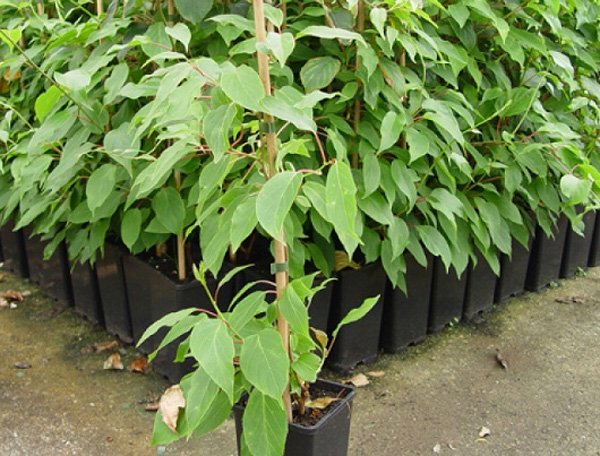
Alumina is not suitable. Pick up the soil moist and loose, with good drainage, not alkaline. With a shallow groundwater table, a hill is built before planting. A good place will be on the slope, which will allow moisture to drain off without overmoistening the roots.
You will need to build a reliable support system.
Watering and fertilizing
While the growing season lasts, the culture needs periodic watering and care:
- pruning dead and damaged shoots;
- top dressing;
- getting rid of weeds;
- loosening the soil around the bushes.
Water the plant by spraying in the morning and evening. If a prolonged drought occurs, up to 70 liters of water is poured under each bush, the procedure should be carried out at least once a week.
Top dressing enhances the ability to withstand frost and increases the future yield. It is carried out in several stages: with potash, phosphorus and nitrogen fertilizers - in early spring and when the first ovaries are formed, with potassium-phosphorus fertilizers - after harvesting.
General rules for pruning
Pruning is carried out in the summer:
- The crop is cut for the first time at the age of 3-4 years. The remaining branches are distributed over the trellis. The ends of the shoots are pinned.
- A culture of 8-10 years old needs rejuvenation. As a result, a stump with a height of 0.4 m is left from the plant.
In spring and autumn, it is impossible to cut the vines - this harms the movement of the juices, which ultimately destroys the plant.
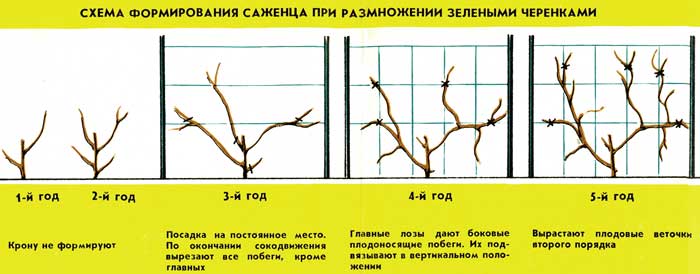
Autumn and winter care
For the winter, young seedlings (not older than 3 years) are removed from the trellises and covered with spruce branches or peat. The thickness of the shelter is from 20 cm. It is recommended to put poison from rodents under the spruce branches. In April, the shelter is removed. More mature bushes in September are shortened by half or by a third, the crown is thinned out.There is no need to cover them for the winter.
Disease and pest control methods
There is a risk of infection:
- fungi (phyllostictosis, powdery mildew);
- gray and green mold;
- fruit rot.
For treatment, the affected fragments of the vines are removed, and then, when the buds hatch, the culture is sprayed with a solution of Bordeaux liquid (1%). After a month, spraying is repeated.
Spraying with a solution of soda ash (0.5%) helps against powdery mildew. The procedure is repeated after one and a half weeks.
Of the pests, the most dangerous are leaf beetles that eat young buds. Caterpillars of the peppered moth, bark beetles, and lacewings appear less often. For prevention, the culture is sprayed with Bordeaux liquid in spring and autumn.
- Phylostictosis
- Powdery mildew
- Leaf beetle
- Lacewing
Gardeners reviews
“We planted a Japanese self-fertile Issei. It grew by 4 meters, the harvest appeared in the first year. Our frosts are not afraid of him. The whole family is happy. "
“I bought a Bingo variety, a couple of bushes (I heard a lot of reviews). The berries turned out to be small, upset. They advised to plant a "man" nearby - and here's the result, with the pollinator, the size of the fruit tripled. "
For gardeners who want to acquire beautiful and tasty fruits on the site, it is the actinidia arguta that is strongly recommended. Unpretentious and exotic, frost-resistant bush is able to decorate the landscape, delivering aesthetic joy and gastronomic pleasure.


